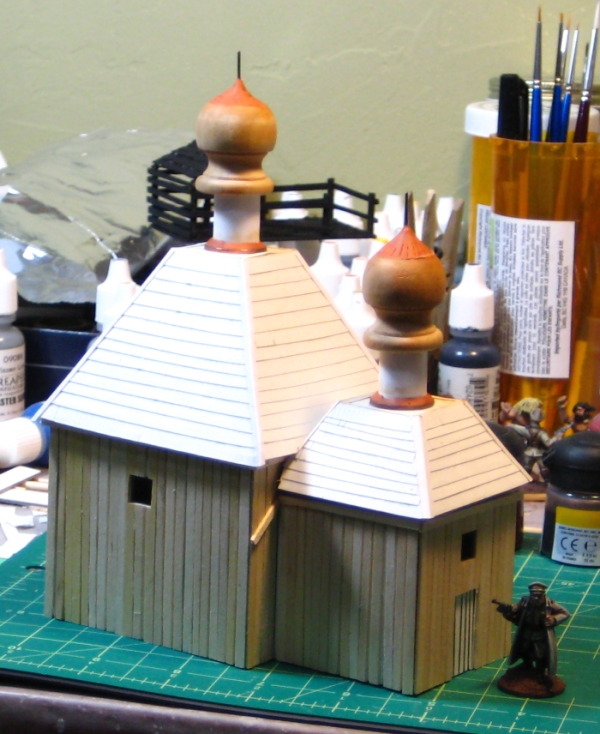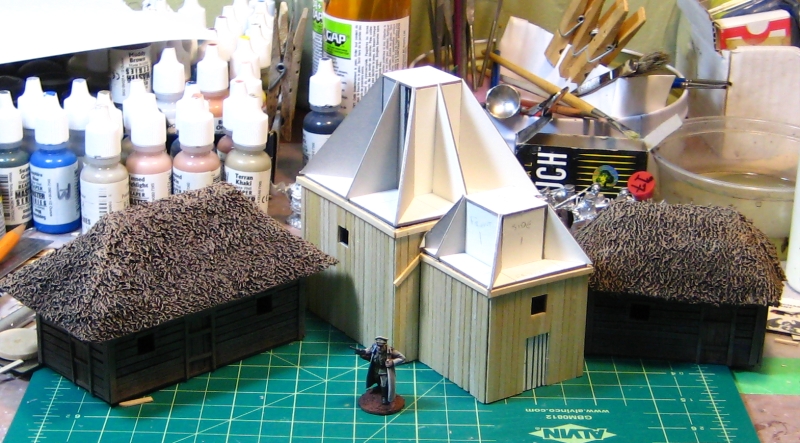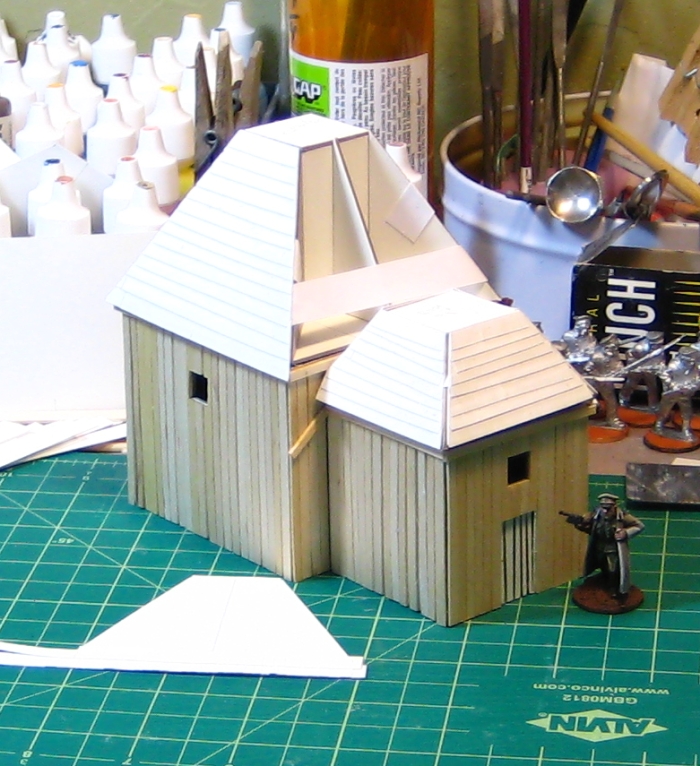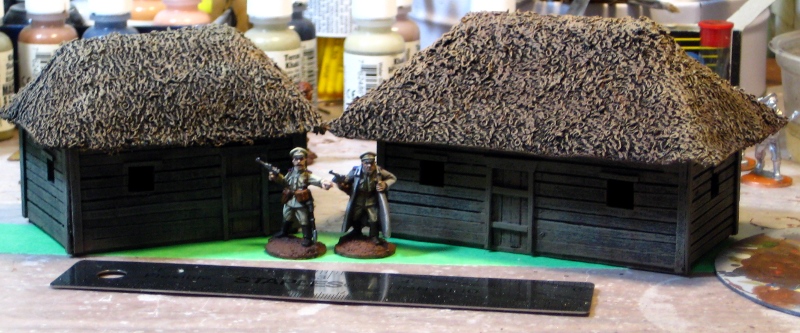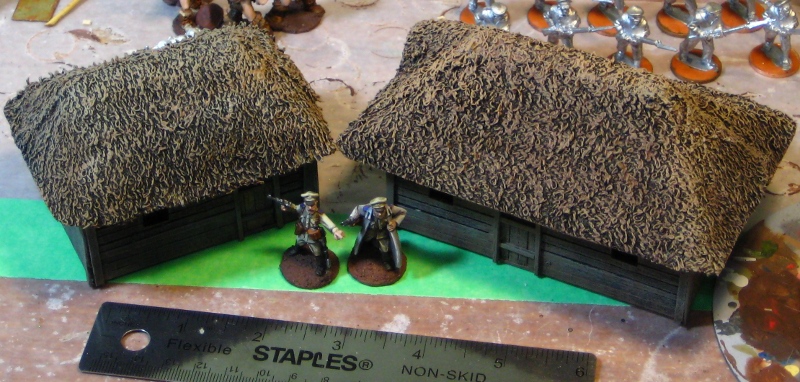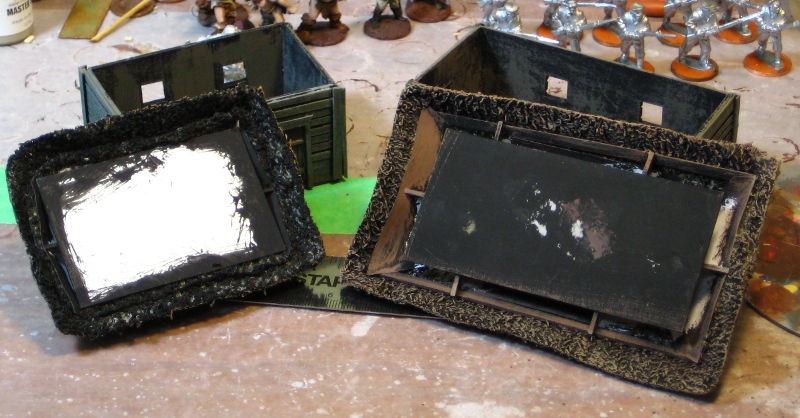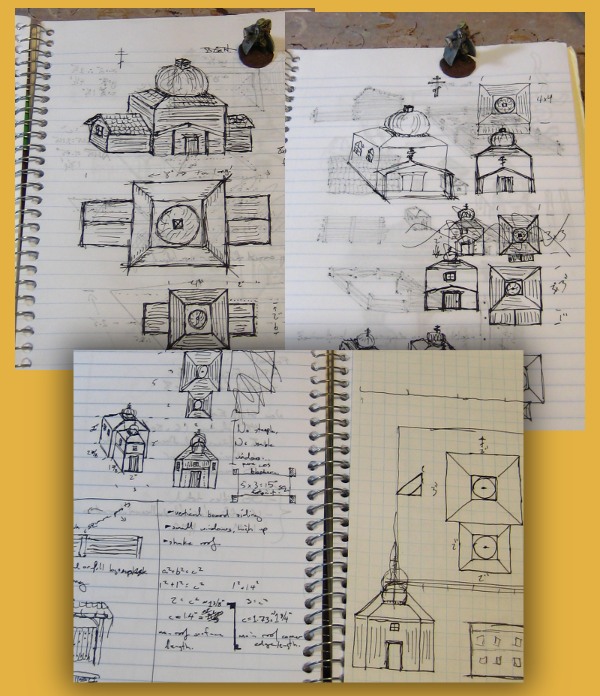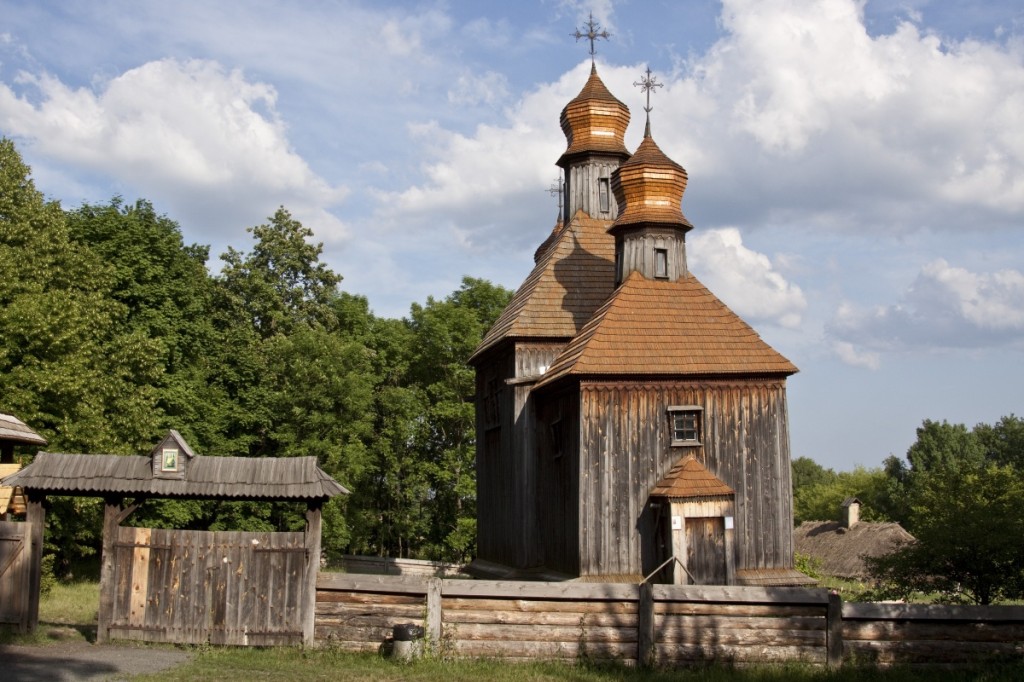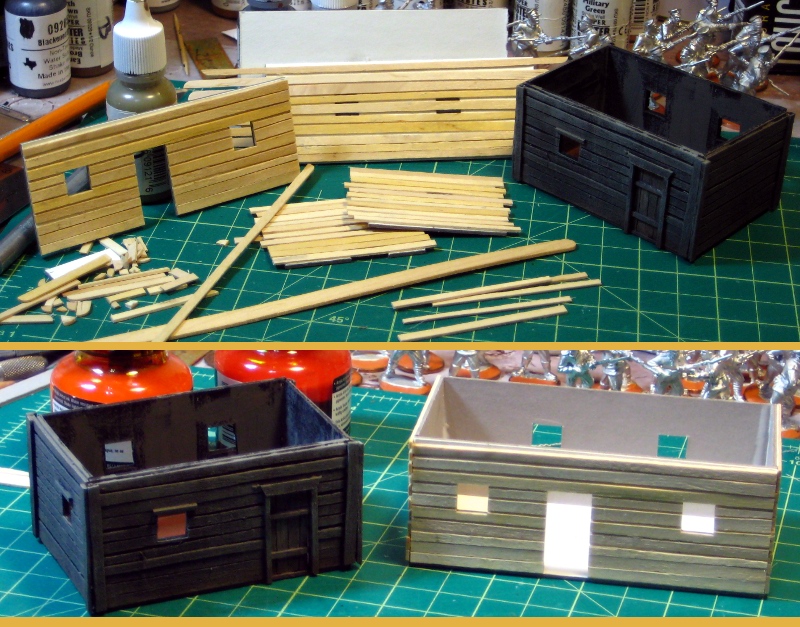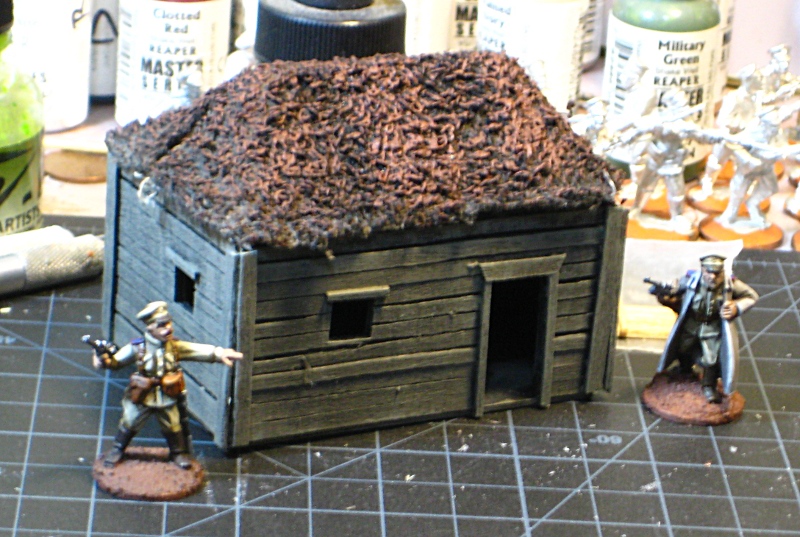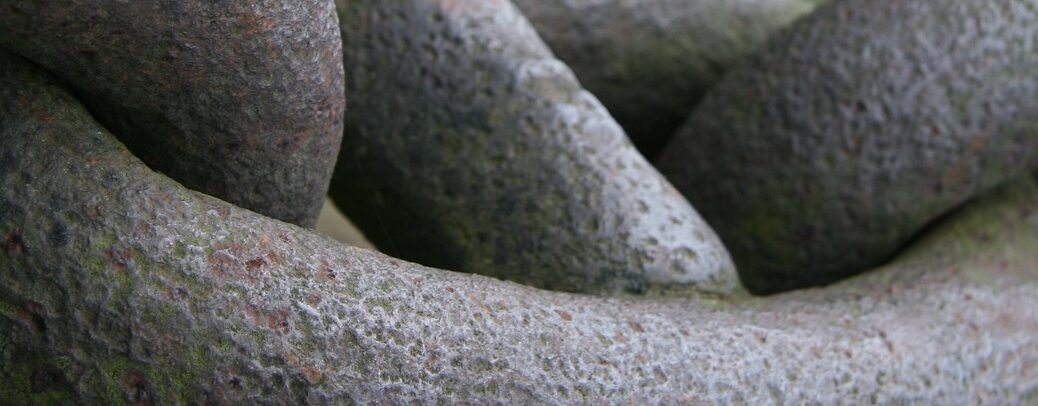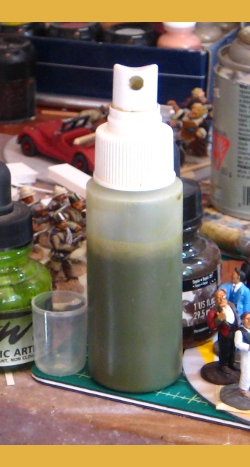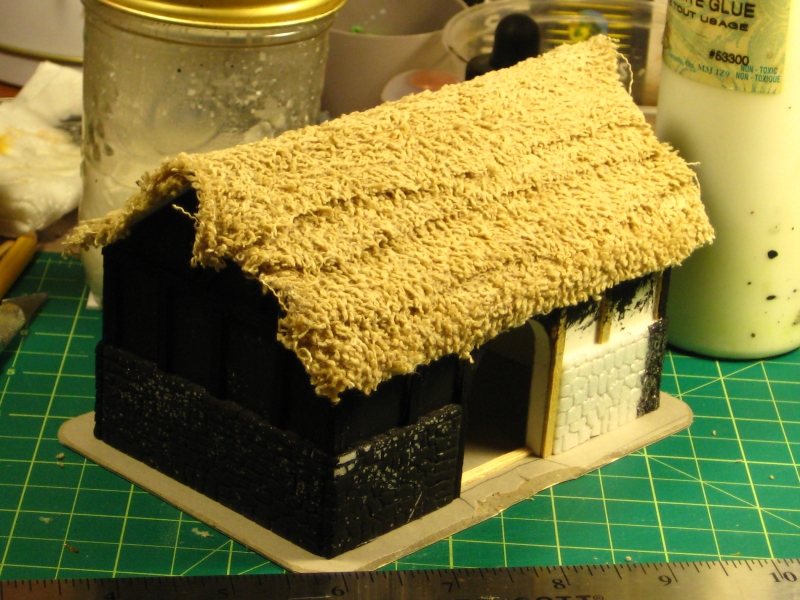It seems to be a week for belated followup reports to earlier posts here on the Warbard. Ah, well.
I finished up the Russian church at the end of January, amidst all the prep for GottaCon’s pulp game, and never did get around to posting the finished photos here.
The front of the church:
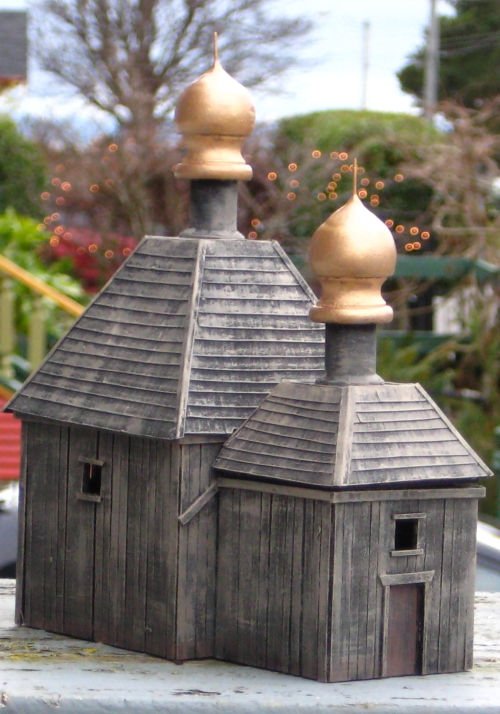
…and your first look at the back, and a better look at the main roof. The whole thing wound up being 5″ long, 3″ wide and 7.5″ tall to the top of the spike on the upper dome. That’s small, but really about as big as I usually build a wargaming building.
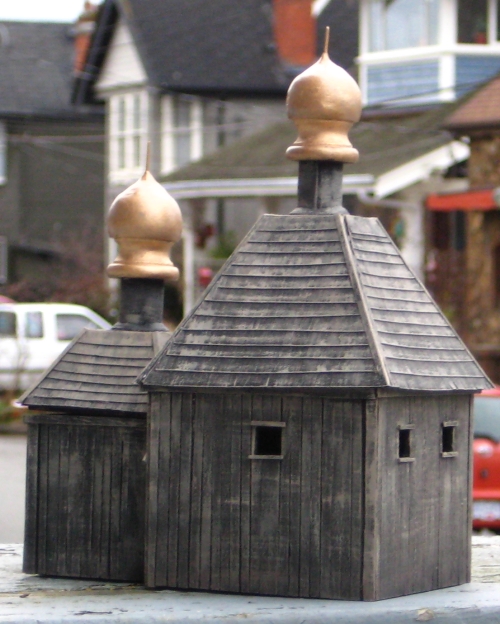
Finally, while I was finishing up the church, I threw together a small detail structure to add clutter and interested to my Russian hamlet. Behold, a pigpen.
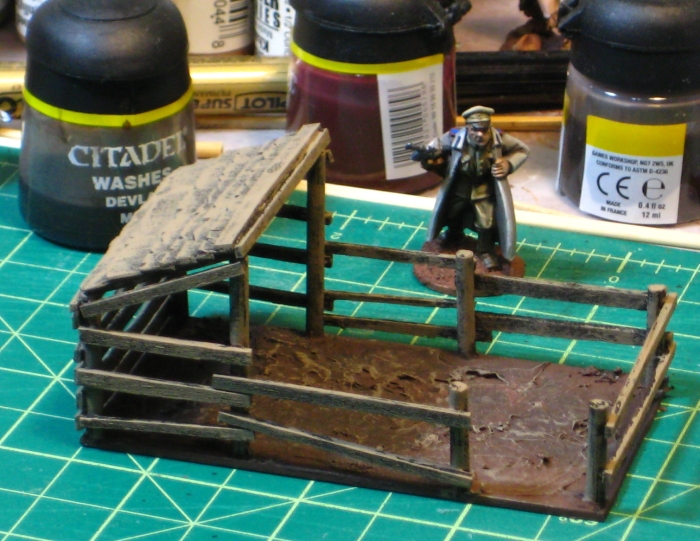
The pigpen is random offcuts from the church project and about 2″x 3″. The mud is hot glue, from a glue gun, which is something I did as an experiment. Blob glue on, push it around before it cools. After it cools, pick the points and stringy bits off, paint brown and wash, and done. One advantage of hot glue mud is that it won’t warp cardboard or wood bases, unlike using globs of white glue.

